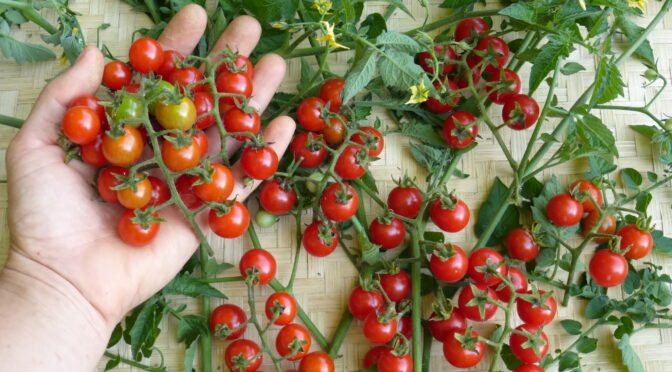Homegrown tomatoes are one of summer’s highlights. Storebought tomatoes just can’t compare! After a few years of gardening, many of us have a tomato variety that earns a special place in our hearts, whether it’s a giant slicer like Radiator Charlie’s Mortgage Lifter or a tiny cherry tomato like Coyote. One way we can all help ensure that these precious open-pollinated and heirloom varieties remain in circulation for generations to come is to choose a variety to steward. Tomatoes are a great crop for beginner seed savers. Here’s how to save tomato seeds properly to ensure good germination and healthy plants in the coming seasons.
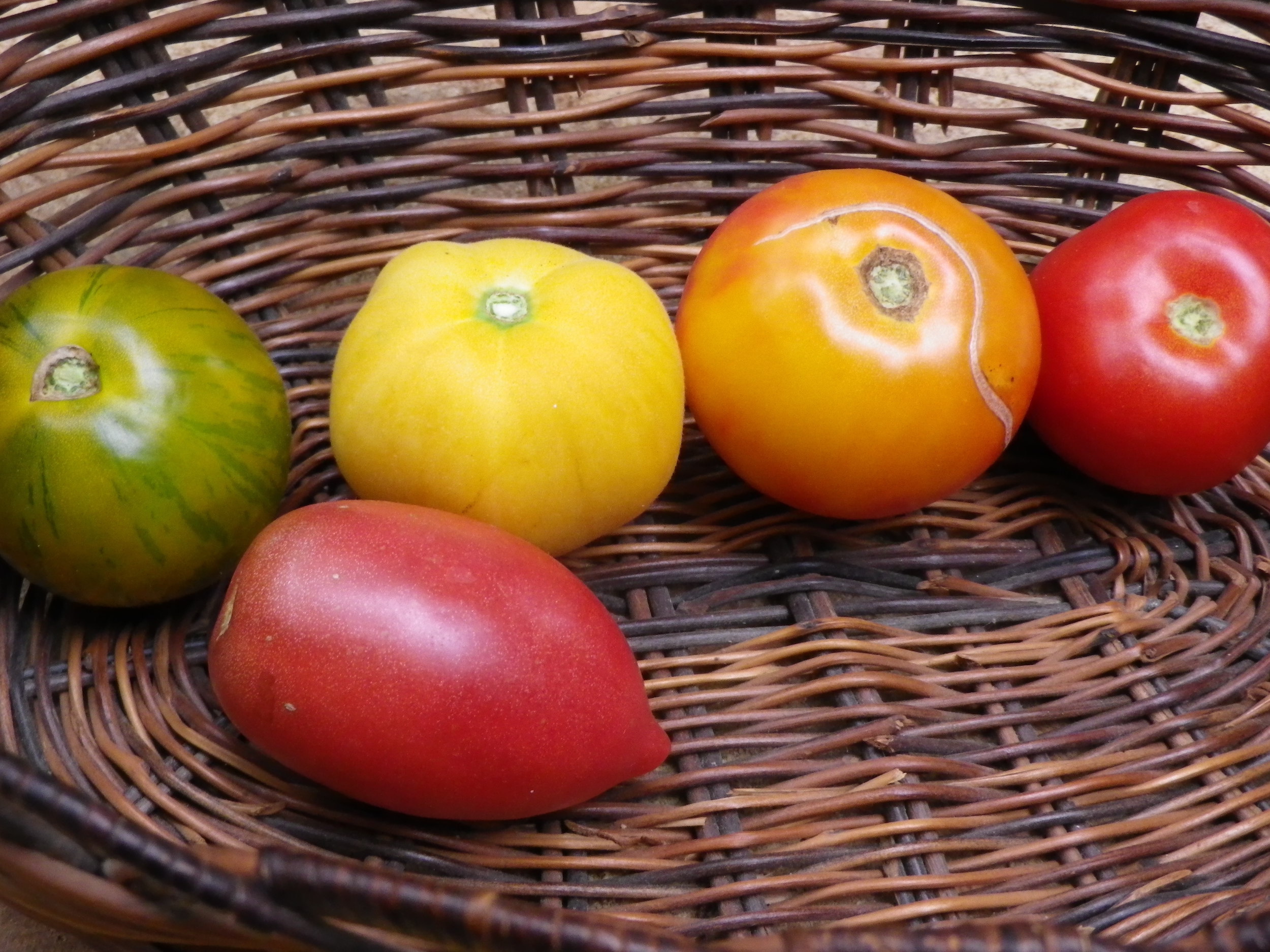 Select an Open-Pollinated Variety
Select an Open-Pollinated Variety
Odds are, you’ve already completed this step if you’ve purchased seeds from us. However, if you have seeds that you’ve picked up at your local store or another seed company, you may want to ensure that they’re an open-pollinated variety and not hybrids. Open-pollinated seeds are established varieties, while hybrids are a cross between two different parents. Hybrids may not produce true-to-type.
Read more about types of seeds in our past post, What’s in a Seed: Open-Pollinated Vs. Hybrid Vs. GM.
Isolate Varieties
Generally, we recommend that you isolate tomato varieties from each other by at least 10 feet (for modern varieties) or 35 feet (for heirloom varieties). This distance means that pollinators are less likely to spread pollen between different varieties. Here at Southern Exposure, we have higher standards for pure commercial seed and isolate varieties by a minimum of 150 feet.
However, a little cross-pollination isn’t the end of the world in a home garden, and in many places, it is still the norm.
Watch and Select Plants
Ideally, throughout the season, you’ve been able to spot plants that are performing particularly well. Maybe they transplanted better, grew faster, produced earlier, or seemed less susceptible to blight. When you go to save seeds, aim to use tomatoes from these high-performing plants.
Pick Overripe Tomatoes
To ensure all the seeds inside are mature, select tomatoes that are as ripe as can be. Don’t worry if they’re soft, split, or damaged. Underripe tomatoes will result in lower germination rates. You can leave tomatoes out to ripen for a few more days if necessary.
Process the Tomatoes
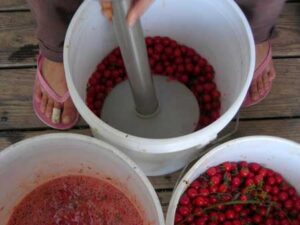 The easiest way to process tomatoes is just to blend or mash them up. This is especially true if you’re working with a large amount of tomatoes as we do. We often use a five-gallon bucket and an immersion blender.
The easiest way to process tomatoes is just to blend or mash them up. This is especially true if you’re working with a large amount of tomatoes as we do. We often use a five-gallon bucket and an immersion blender.
However, if you’re working on a smaller scale and want to save as much of the tomatoes as possible, just cut them open and scoop out the gelatinous, seedy pulp. Place this material into a bucket or jar. You can use the rest of the tomato for making sauce, dehydrating, or canning.
Ferment the Seeds
It may sound weird, but you’ll get better results if you let your tomato 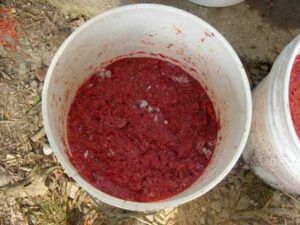 seed mixture ferment for 2 to 3 days. Tomatoes seeds have a gelatinous coating. In the wild, tomato seeds would fall to the ground, and this coating would slowly rot off until it was time for them to sprout.
seed mixture ferment for 2 to 3 days. Tomatoes seeds have a gelatinous coating. In the wild, tomato seeds would fall to the ground, and this coating would slowly rot off until it was time for them to sprout.
To ferment your seeds, place them into a bucket or container with a lid or cover. This lid should keep out flies, but you don’t want it to be airtight as air pressure could build up as the tomatoes ferment. Stir this mix about every 12 hours. A little mold will probably form on the surface. Don’t worry it won’t hurt the seeds; just mix it in.
Wash Your Tomato Seeds
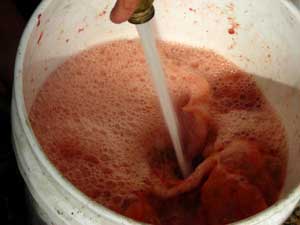 After your tomato seeds have fermented, you’ll want to add some water. For the large batches we process, we like to use high water pressure, which helps to dislodge the seeds from the pulp you can also give the mixture a good stir. Once you’ve added the water, the pulp, and any bad seeds will float to the top, while good, viable seeds sink to the bottom.
After your tomato seeds have fermented, you’ll want to add some water. For the large batches we process, we like to use high water pressure, which helps to dislodge the seeds from the pulp you can also give the mixture a good stir. Once you’ve added the water, the pulp, and any bad seeds will float to the top, while good, viable seeds sink to the bottom.
Pour off the pulp and most of the water. Add more water and pour the pulp off again. Repeat this process until you’ve removed as much pulp as possible. Lastly, strain your seeds and rinse them in a mesh colander or similar screen.
Dry Your Tomato Seeds
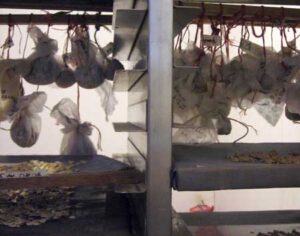 Dry your tomato seeds so that they’re out of direct sunlight and get good air circulation for three weeks. You can lay them flat on screens, pieces of paper, or paper towels. Don’t put them in a dehydrator; it can damage the seeds. You can also hang small bundles in pieces of cloth.
Dry your tomato seeds so that they’re out of direct sunlight and get good air circulation for three weeks. You can lay them flat on screens, pieces of paper, or paper towels. Don’t put them in a dehydrator; it can damage the seeds. You can also hang small bundles in pieces of cloth.
Label and Store Your Seeds
It’s best to store your seeds in an airtight container somewhere cool and out of direct sunlight. An airtight container in the freezer works well for tomato seeds and many other seeds.
Always label your seeds well. Our memories are never as good as we think they are! Be sure to include the variety name and year of harvest on your label.
This winter, you don’t need to order seeds, and next spring, you can proudly plant your own! Following these simple steps, you can proudly save tomato seeds and steward a variety for years to come!

